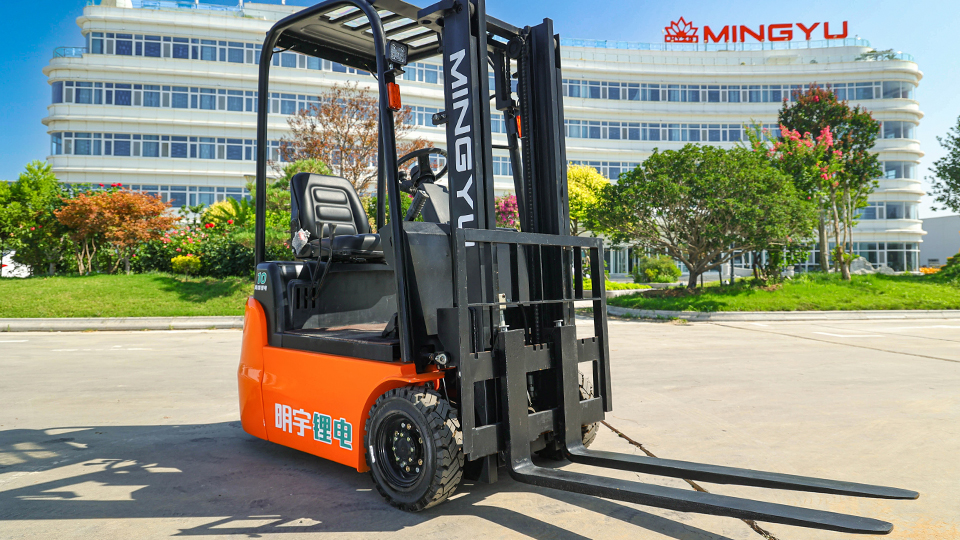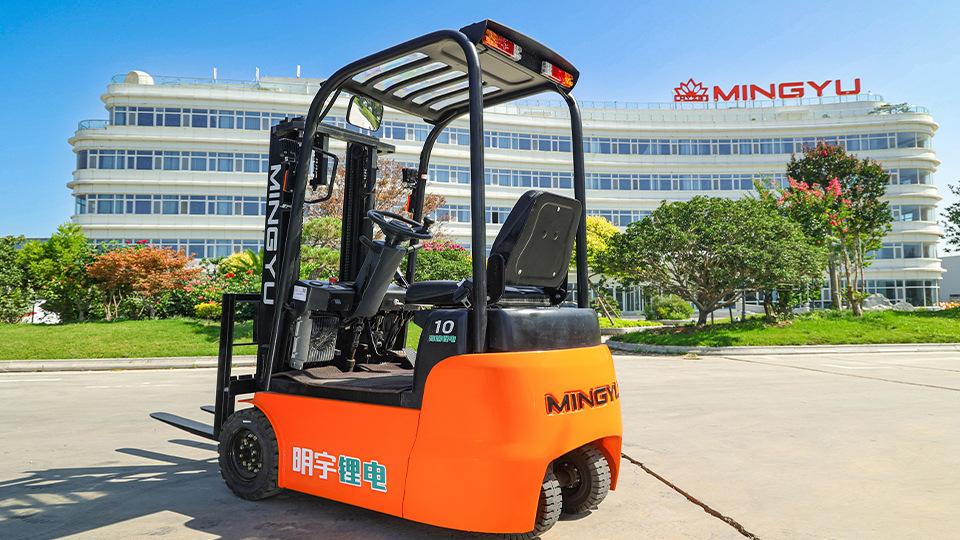
The mast is one of the most critical components of a forklift, serving as the vertical assembly that performs the essential functions of lifting, lowering, and tilting loads. It is the structural framework that supports the forks and the carriage, directly enabling the forklift to manipulate materials. Without a properly functioning mast, a forklift is rendered useless. Understanding its components, functions, and the various types available is key to operating a forklift safely and efficiently.
The Core Function: Lift and Tilt
The primary purpose of the mast is to provide a stable vertical guide for the carriage, which is the platform that holds the forks. This allows the forks to move smoothly up and down. The mast also contains the hydraulic cylinders that power this movement. In addition to the vertical lift, the mast is also responsible for the tilt function, which allows the operator to tilt the forks forward or backward. This is crucial for:
Tilting back (towards the forklift): To prevent the load from sliding off the forks during transport.
Tilting forward (away from the forklift): To help the operator get under a pallet or to deposit a load with precision.
The ability to lift, lower, and tilt a load with precision is what makes the forklift an indispensable tool in material handling.

Key Components of the Mast
A forklift's mast is a complex assembly composed of several interconnected parts that work in harmony.
Mast Channels (Rails): These are the vertical steel beams that form the main structure of the mast. They are designed to be strong and rigid, providing the guide for the carriage. Most forklifts have a two- or three-stage mast, meaning they have two or three sets of nested channels that extend telescopically to increase the lifting height.
Carriage: The carriage is the moving component that travels up and down the mast channels. It is the mounting point for the forks and any other attachments. It typically has rollers that fit into the mast channels, ensuring smooth and stable vertical movement.
Forks: The forks are the tines or blades that extend from the carriage to lift and carry a load. They are adjustable and can be moved horizontally to accommodate different pallet widths.
Hydraulic Cylinders: These are the powerhouses of the mast. They use hydraulic fluid pressure to extend and retract, moving the carriage and the forks. There are typically two types of cylinders:
Lift Cylinders: These are the large cylinders that provide the main lifting force. They are responsible for raising the carriage.
Tilt Cylinders: These smaller cylinders are mounted on the chassis and are responsible for tilting the entire mast assembly.
Chains and Pulleys: In many mast designs, steel chains and pulleys are used in conjunction with the hydraulic cylinders to amplify the lifting force and ensure smooth, synchronized movement of the mast stages.
Types of Forklift Masts
Forklift masts come in various designs, each suited for different applications and lifting requirements. The number of stages a mast has determines its lifting height and retracted height.
Single-Stage (Simplex) Mast: This is the simplest type of mast, with a single channel and no telescoping sections. The forks and carriage rise with the hydraulic cylinder. It offers a limited lifting height and is typically used for low-level lifting applications.
Two-Stage (Duplex) Mast: This mast has two telescoping channels. The inner channel and carriage rise together initially, then the inner channel extends. This design allows for greater lifting height than a simplex mast.
Three-Stage (Triplex) Mast: This is a very common type of mast. It has three telescoping channels, allowing for significant lifting heights while maintaining a relatively low retracted height. This makes it ideal for warehouses with low ceilings or doorways.
Four-Stage (Quadplex or Quad) Mast: Used for very high-lift applications, this mast has four telescoping channels. It is common in facilities with high-bay racking systems.
Free Lift: A Crucial Feature
Free lift is a critical feature of some mast designs, particularly those used in confined spaces like shipping containers or warehouses with low ceilings. It refers to the distance the carriage and forks can be raised before the overall height of the mast itself begins to increase.
Standard Masts (e.g., Duplex): The mast's overall height begins to increase as soon as the forks are lifted, making them unsuitable for working inside containers.
Full Free Lift Masts (e.g., Triplex, Quadplex): These masts have a special design that allows the forks to rise a considerable distance (the "free lift") while the mast channels remain retracted. This is achieved by a central hydraulic cylinder that lifts the carriage independently before the mast stages begin to extend. This feature is essential for stacking inside enclosed spaces where there is an overhead obstruction.

Maintenance and Safety
The mast is a high-stress component and requires regular maintenance to ensure safe and reliable operation. This includes:
Pre-Shift Inspections: The operator must inspect the mast before each use, checking for any cracks, leaks in the hydraulic cylinders, or damage to the chains and pulleys.
Hydraulic Fluid: The hydraulic system must be regularly checked for proper fluid levels and leaks.
Chain and Pulley Integrity: The chains and pulleys should be inspected for rust, wear, and proper tension. Worn or damaged chains can lead to catastrophic failure.
In conclusion, the mast is the heart of a forklift's lifting mechanism. Its design, functionality, and proper maintenance are paramount to a forklift's performance and, more importantly, to the safety of the operator and the work environment. Understanding the different types of masts and their specific features allows operators to select the right equipment for the job and to perform their duties with confidence and expertise.
Name: selena
Mobile:+86-13176910558
Tel:+86-0535-2090977
Whatsapp:8613181602336
Email:vip@mingyuforklift.com
Add:Xiaqiu Town, Laizhou, Yantai City, Shandong Province, China